This week in South East Queensland
3 - 9 June
WHILST there are still a couple of weeks to the shortest day of the winter solstice, this week marks the earliest sunsets thanks to Earth's slightly elliptical orbit around the sun. This week the sun is setting at around 5:00. People working this week would be leaving work just as the sun sets, but the short evening twilight will ensure the sky is completely dark by the time they get home.
Today's hike takes me from Mirapool down to the bottom of Reeder's Point, from where I head over South Passage back to North Stradbroke Island. From there I head across Flinder's Beach, over headlands between Cylinder Beach, Deadman's Beach and Frenchman's Bay to Point Lookout from where I watch the sunset looking down what will be the final leg of this trek.
Today's Journey
Distance hiked today: 15.5km
Total distance hiked to date: 991.2km
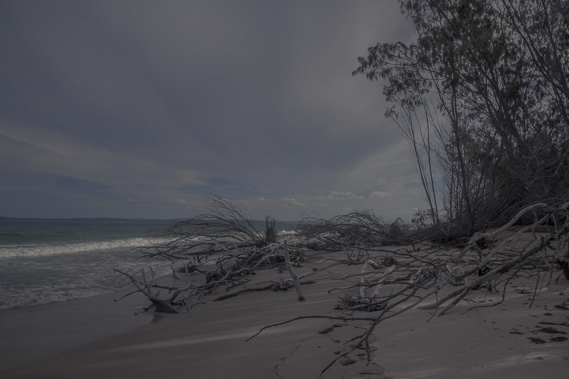 |
05:47 - Leaving Mirapool under moonlight heading along the coast. This was initially an obstacle course with the eroding coastline covered in trees falling into the sea. |
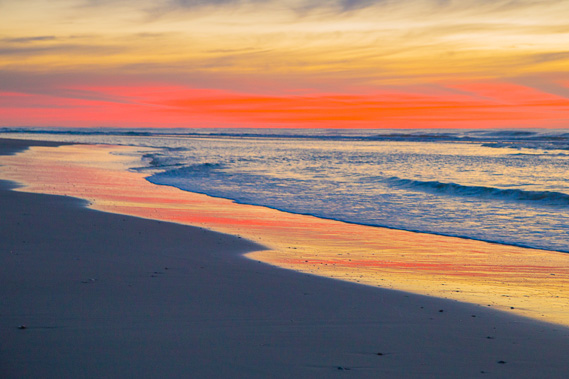 |
06:13 - Heading down the beach towards Reeders Point as the fire of first light appears on the eastern horizon behind me. |
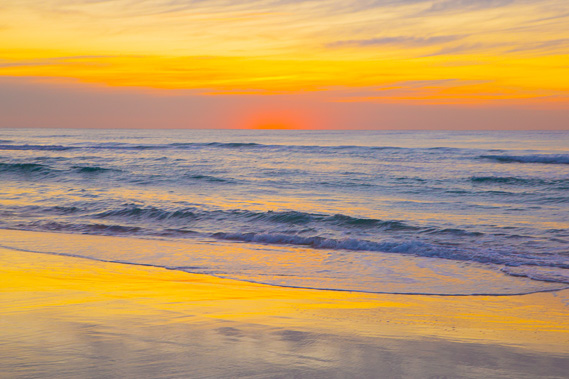 |
06:28 - The sun about to rise behind distant high cloud in two minutes. |
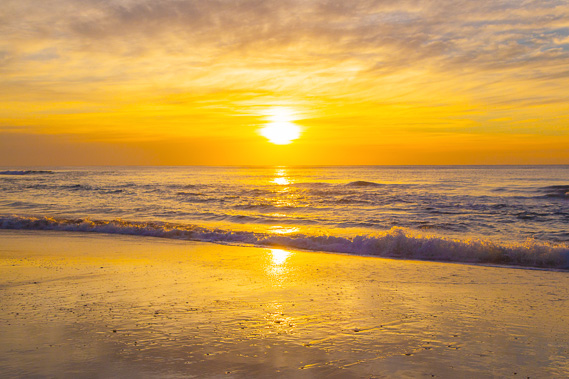 |
06:48 - The sun rises brilliantly over the waves covering the sea and sky with gold. |
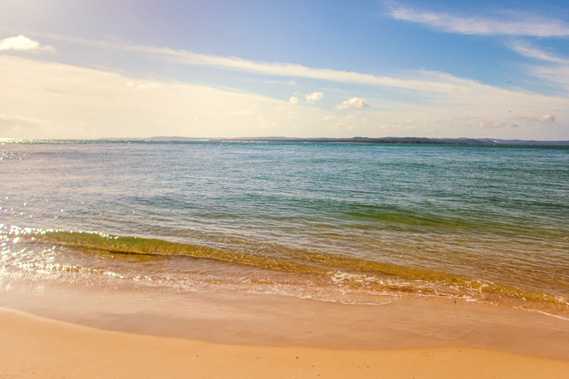 |
07:07 - Looking across to North Stradbroke Island at the pickup point at Reeders Point, almost the same place where I landed on this island eight days ago. From here I head back over to Straddie and follow its northern coast across to Point Lookout in the distance to the left. |
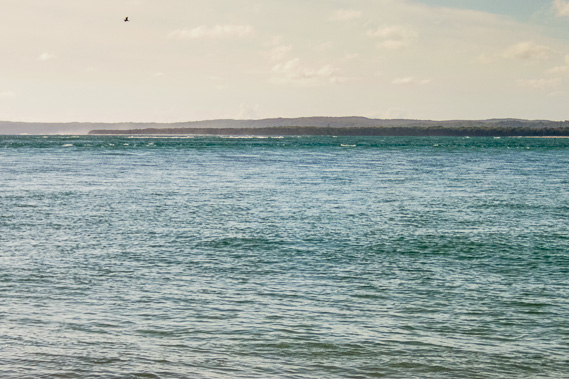 |
07:27 - Crossing South Passage towards Amity Point. We follow the deep channel cutting back towards Amity Point to avoid the rough waters over the submerged sandbanks between the islands. |
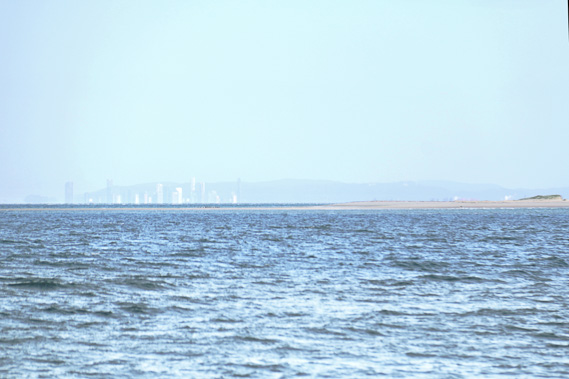 |
07:33 - Looking the other way to the west shortly before arriving on North Stradbroke, I get my last glimpse at the Brisbane CBD zoomed in the distance. |
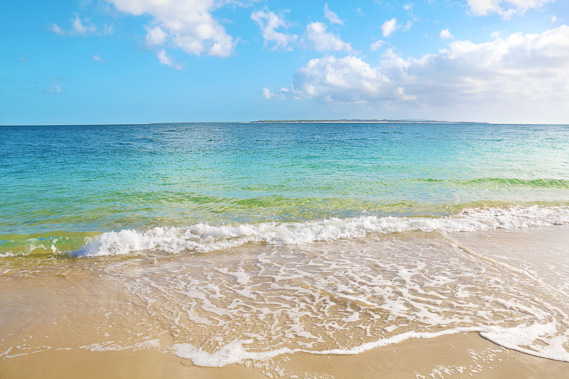 |
08:14 - Arriving at Amity Point a kilometre or two around the coast from the port where I passed eight days ago. This is looking back towards Moreton Island, looking really small from here. From this pointy ended view it's hard to believe it took eight days to hike around. |
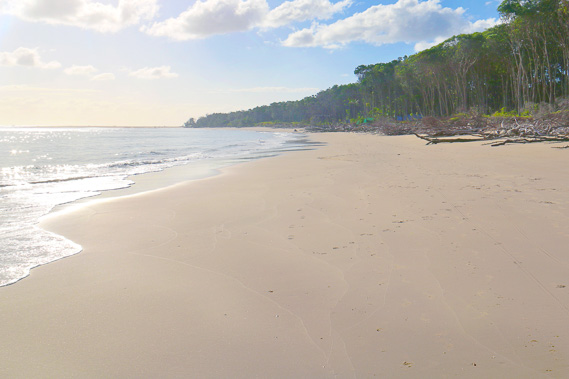 |
08:24 - I start walking towards Reeder's Point, along this final day of this leg across the top of North Stradbroke Island, which is essentially a continuation of Moreton Island's main beach, broken only by South Passage. This part of the beach is closed to traffic, so this is a peaceful mid morning walk. |
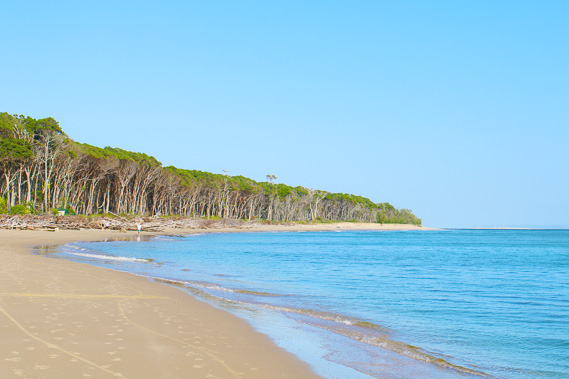 |
08:32 - Looking back to Amity Point, seeing the recent erosion of the forest as the channel across South Passage changes eroding both islands. |
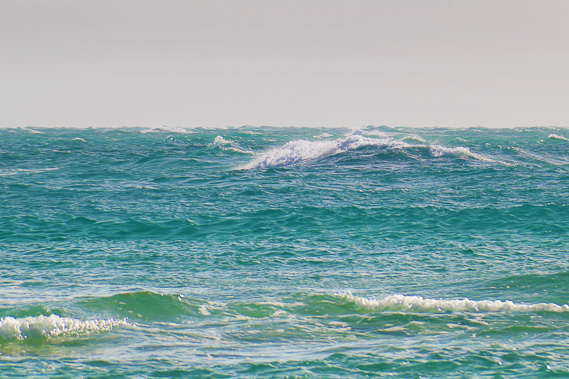 |
08:42 - Heavy swell breaking on the submerged sand bars of South Passage. No wonder there have been numerous shipwrecks here. |
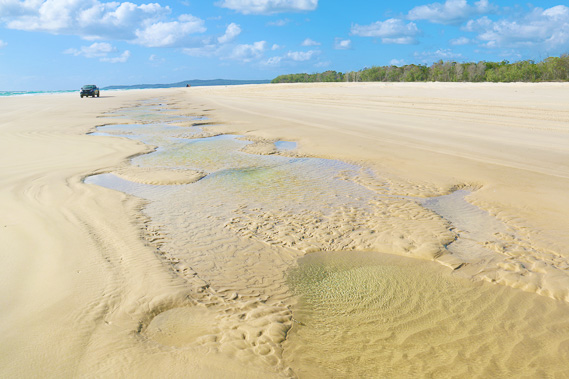 |
08:48 - Following around Reeders Point at the start of where vehicles can drive, so my peace is over. The Point Lookout Volcano is now coming into view. |
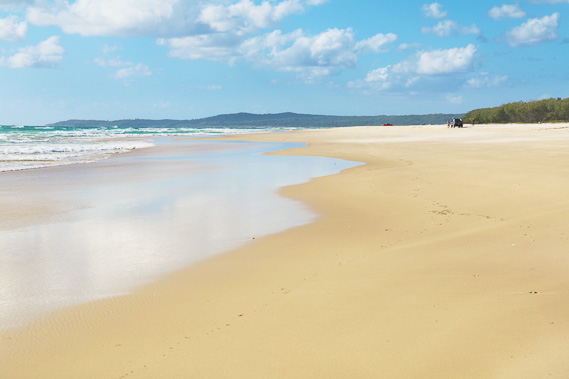 |
08:50 - First view towards Point Lookout across Flinder's Beach as a strong head wind sand blasts me from the south east. This is probably the last of the prevailing winds to blow before winter closes in. Flinders Beach is named after Matthew Flinders, who first landed on the island in 1803. |
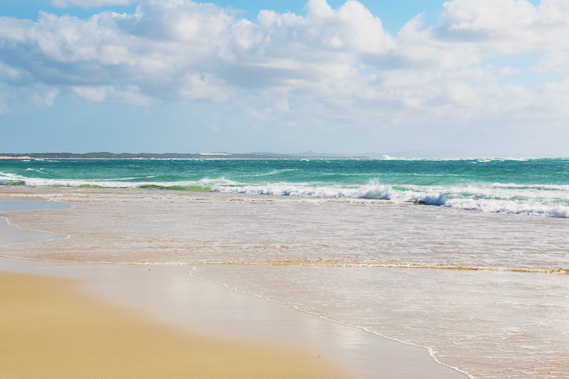 |
08:55 - Looking back to Moreton Island over the rough seas of South Passage. It's amazing what a difference a kilometre makes. My route across the passage was quite calm. In the distance I can see the Little Sandhills, and can just make out Mount Tempest through the salt haze. |
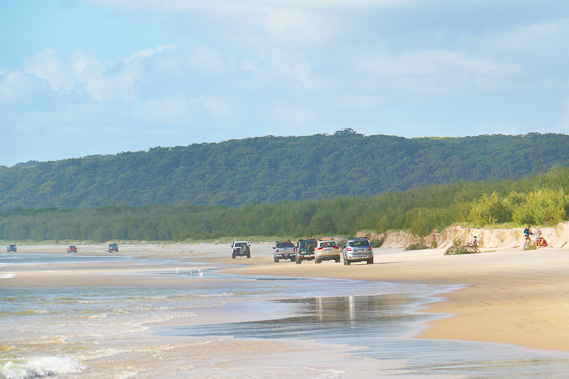 |
09:13 - Flinder's Beach is very busy with a convoy of vehicles travelling towards the other end of the beach before the tide gets too high. |
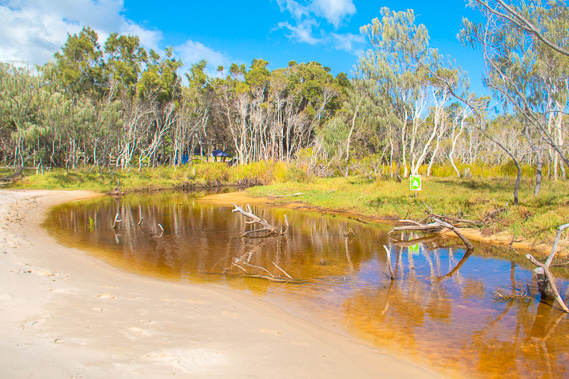 |
10:26 - I reach the first of several fresh water streams flowing out of the forested swamp to the sea. The sand bank holds back the water and the swampland stretching through the uninhabited forest. |
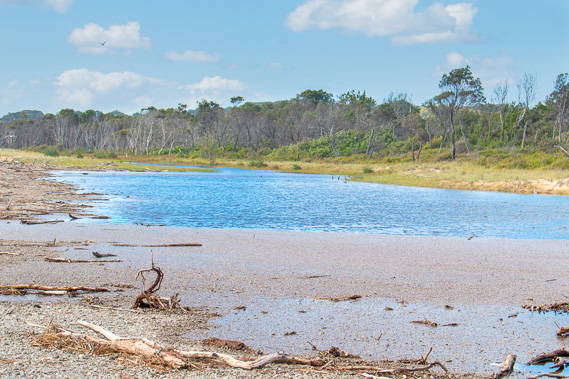 |
10:48 - Another large stream held back by a sand bank. This stream is filled with pumice from an offshore eruption several years ago where a cubic kilometre of pumice floated to the surface, and some drifted here. |
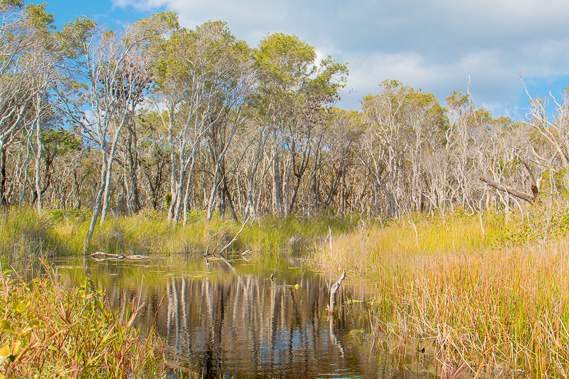 |
11:11 - The deep channel of the stream is held back by the sand bank. When it rains heavily, the water rises enough to dig a deep channel through a low point on the dune allowing the channel to clean itself out and deepen until the tides wash the sand back. This is where the channel turns inland into the wetland forest swamp. |
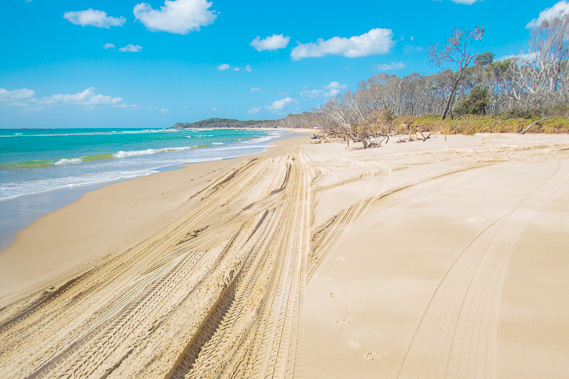 |
11:32 - The tide is in now, and the road tracks are deep making this final section of beach quite difficult to hike along. |
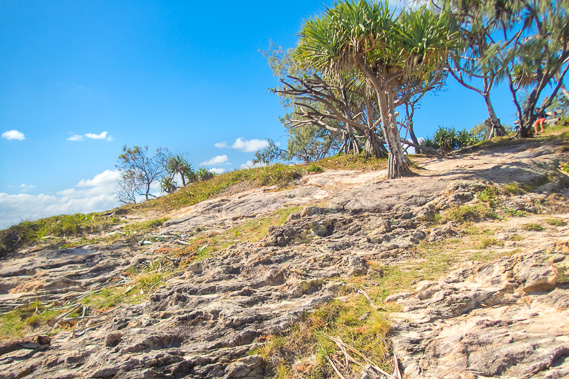 |
11:58 - I reach the end of Flinder's Beach and follow a rough track across the headland. The Point Lookout town starts nearby so it will become more crowded from now on. This is the first solid rock I've seen since Cape Moreton, the start of another 22 million year old volcanic cone holding this island together. |
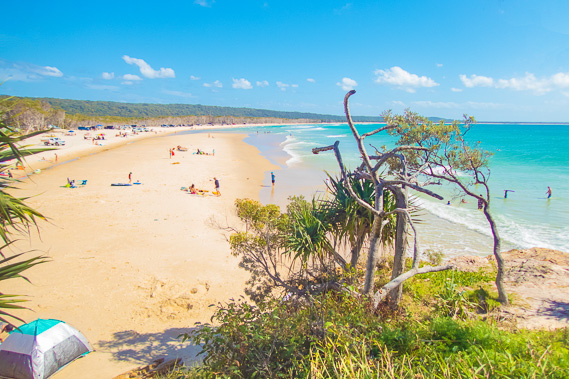 |
12:00 - Final view along Flinder's Beach from the track, seeing how far I've come across the top of the island. |
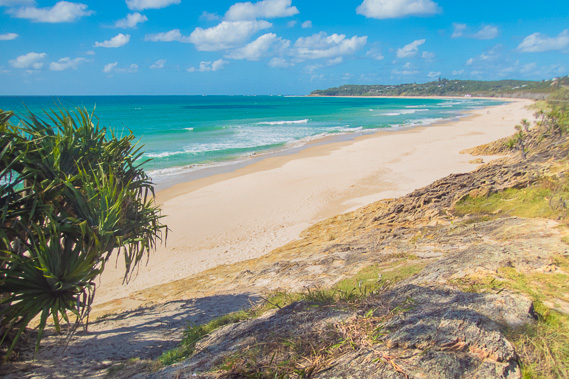 |
12:03 - Looking into the beautiful Cylinder Beach, which I will need to walk its length followed by a couple of smaller bays before reaching Point Lookout. Cylinder Beach was named after the acetylene gas cylinders dropped off here for lighting the construction site of the Point Lookout lighthouse around 1932. |
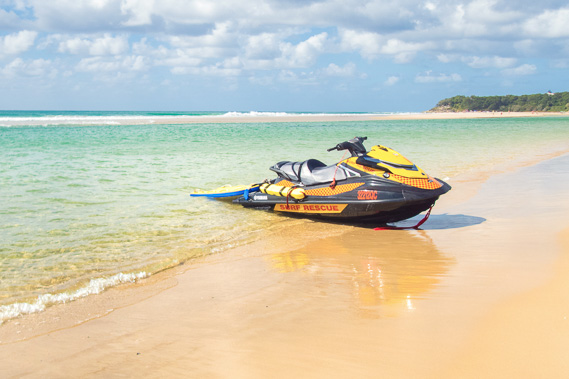 |
13:06 - A lifesaving jet ski at the edge of a gutter on Cylinder Bay as the clouds cover the sky. |
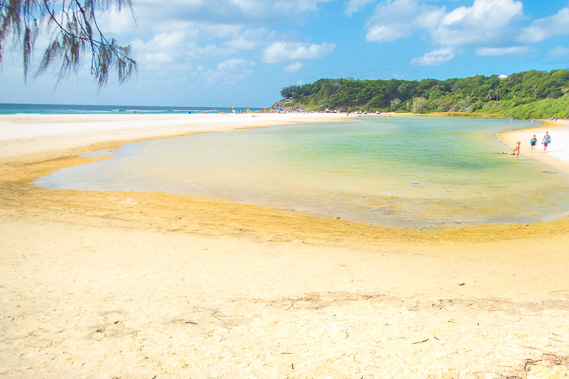 |
13:22 - I cross a small headland to another small lagoon at the eastern end of Cylinder Beach. |
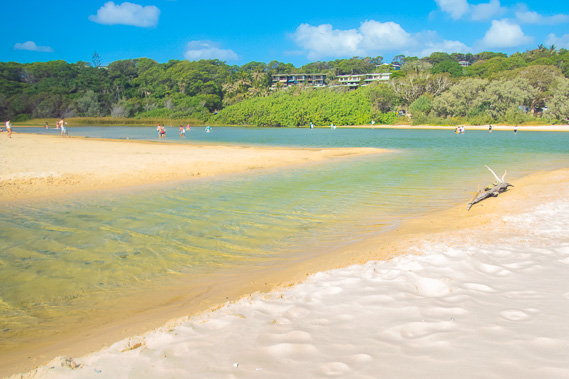 |
13:26 - The outlet of the Cylinder Beach lagoon. The sand bank is holding the water in making for a bit of a wet crossing for anyone heading from the town to the beach. |
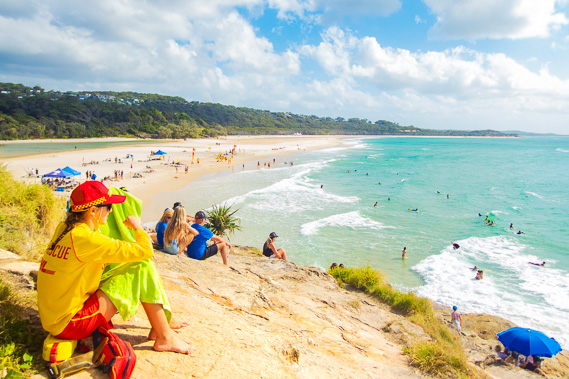 |
13:36 - Climbing the hill at the end of Cylinder Beach whilst a surfing competition is in progress. Very crowded here after the peacefulness of Moreton Island. Although there is no bridge from the mainland to North Stradbroke Island, this is still a very popular local getaway. |
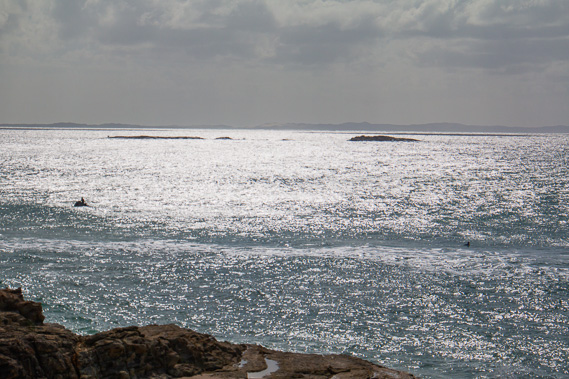 |
13:52 - View across to some reefs and to Moreton Island, already appearing distant across the bay. |
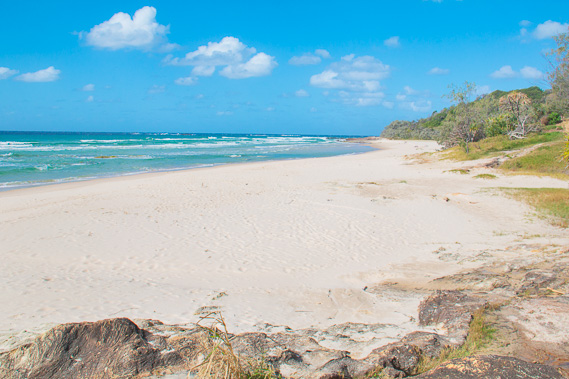 |
13:56 - Once over the headland, I reach Deadman's Beach. This is so named due to the shipwreck of the freighter Prosperity in 1902 on the reefs hidden offshore. A local stockman living here rescued and cared for five survivors. Fifty years later the skeleton of the ship's cook along with a boot were uncovered on the sand of the beach. The discovery of the cook's remains gave this bay its name. |
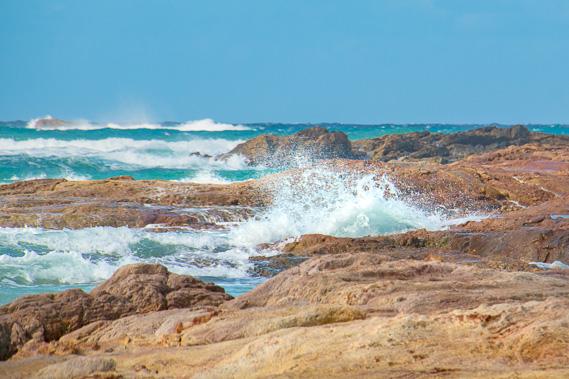 |
14:07 - Waves breaking on the rocks at the end of Deadman's Beach. It's much shorter than the beaches I've been navigating so far along the coast. |
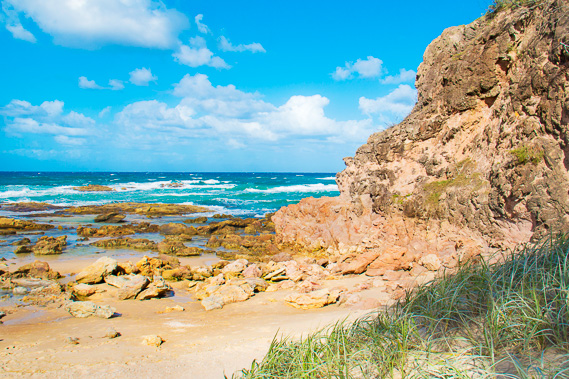 |
14:18 - Reaching the end of Deadman's Beach where I have to cross over a bluff along a steep sandy track just past a small sand blow. This bluff is called Dune Rocks. |
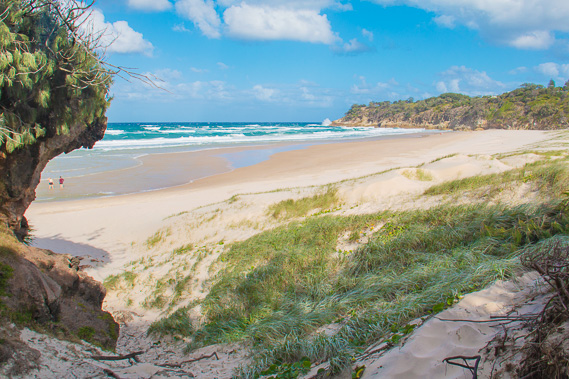 |
14:32 - Once on top of the narrow ridge, the track steeply descends into Frenchman's Bay, with Point Lookout now visible at the other end. |
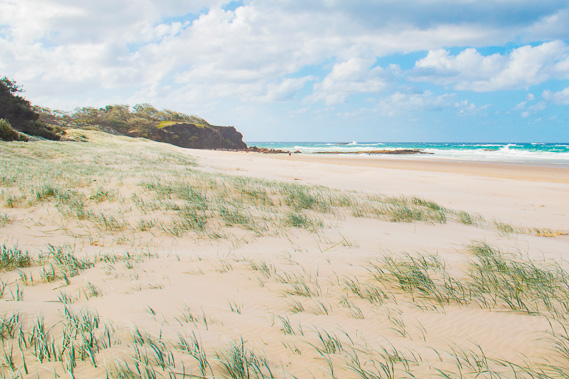 |
14:42 - Looking back along Frenchman's Beach just before heading up the stairs. It was named after four sailors from some of the French speaking islands of the South Pacific. They landed on this beach and settled around here. Their descendants still live on Stradbroke. |
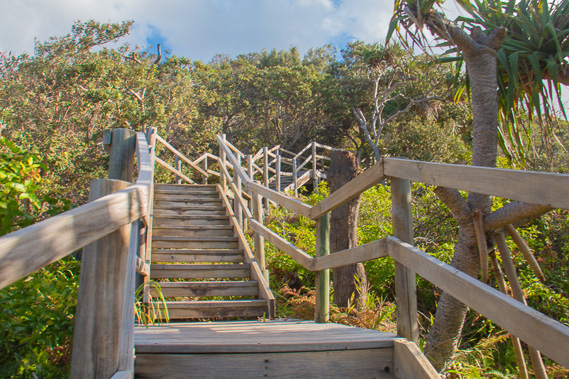 |
15:04 - The steep stairs up to the Point Lookout Road - the first sealed road I have seen since Dunwich nine days ago. |
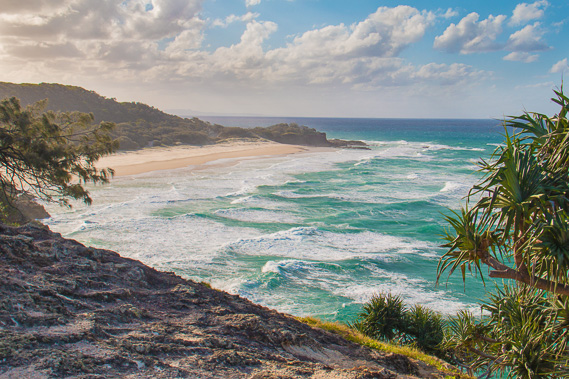 |
15:25 - View across Frenchman Beach from the Point Lookout track. Today's strong winds have brought in a heavy swell today, but the wind has all but died down now, so the waves will quickly subside. |
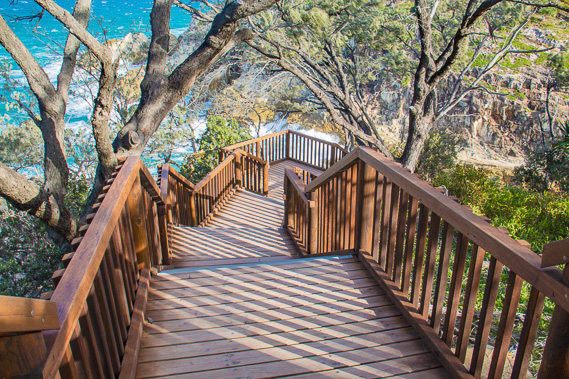 |
15:27 - Stairs down into The Gorge. This walkway was only recently upgraded making an otherwise difficult traverse across these headlands very easy. |
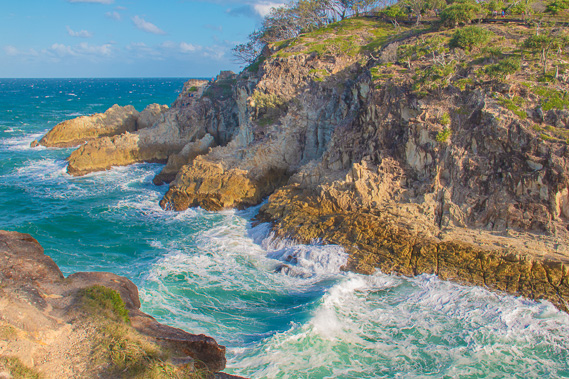 |
15:30 - Large waves breaking into The Gorge. This is where some soft rock has been eroded out of the crater leaving the harder rock on either side. |
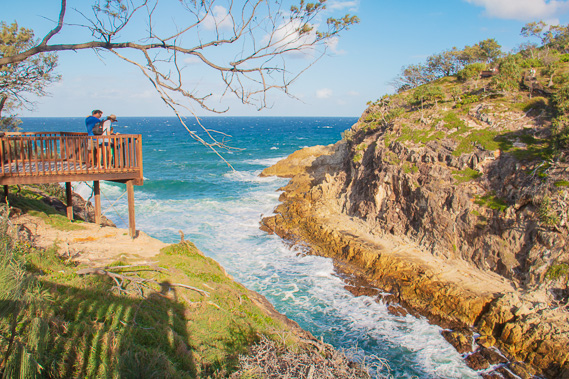 |
15:34 - View from the back of The Gorge with the walkway visible on either side. |
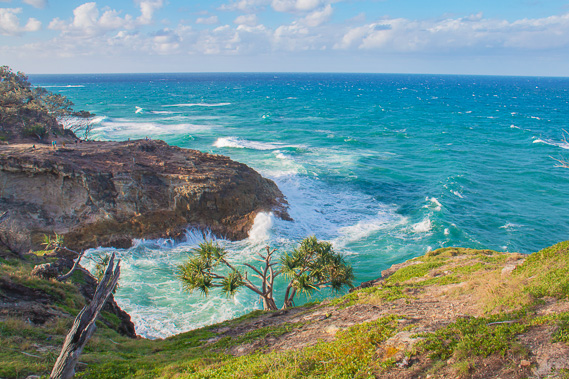 |
15:47 - View back across the gorge from the other side. A thick bank of cloud is now approaching, but no rain is expected. The point was the site of an American radar station during World War II to help protect Moreton Bay. This area saw action from a Japanese torpedo submarine firing on the hospital ship Centaur killing 368 people, the biggest loss of life from a submarine attack in Australia's history. |
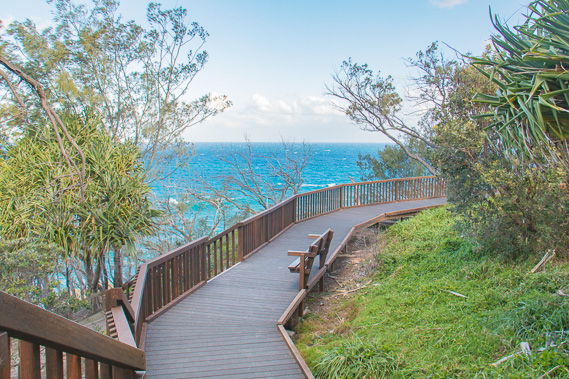 |
15:48 - Boardwalk around Point Lookout, the most easterly point of Queensland (Cape Byron in northern New South Wales is the most easterly point of Australia). The point was named by James Cook in 1770 as he sailed past. The first European contact with the Aboriginal people was by Matthew Flinders in 1803 when he was organising the rescue of a nearby shipwreck. He and his small crew stopped near here (probably in Cylinder Bay) and were helped by the local Noonuccal people of Amity Point. |
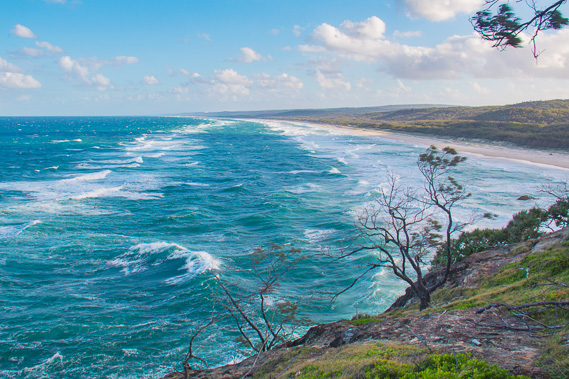 |
15:49 - First view of the main beach extending south from this point, all the way down North Stradbroke and South Stradbroke Islands, and continuing along the Gold Coast to my final end point at Coolangatta, over 91 kilometres away and still over the horizon, I'm 10 11ths of the way along the trek, and from here it's all pretty much a straight line to my destination hopefully this time in five days' time. |
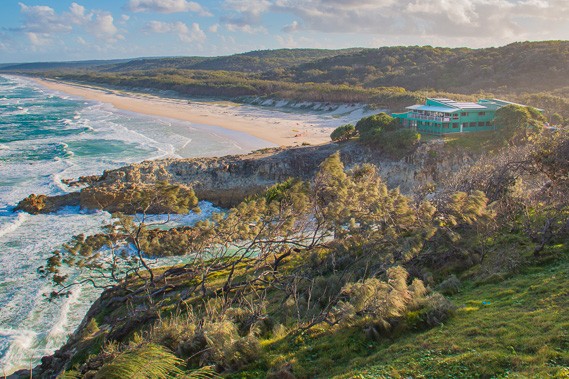 |
15:55 - The North Stradbroke Surf Club perched on a volcanic ledge. I'm going to aim for the rocks in front of it for sunset, but the clouds are quickly thickening. |
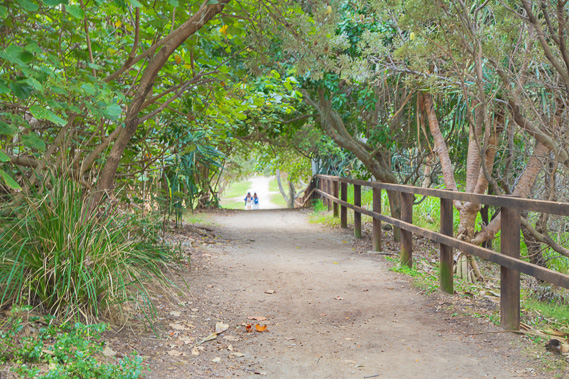 |
16:31 - Following the trail away from Point Lookout to the town centre as the cloud covers the sky. Tourism started here slowly in the 1930s, then started picking up when the ferry service between Cleveland and Dunwich started in the 1960s. It is now quite a popular tourist destination. |
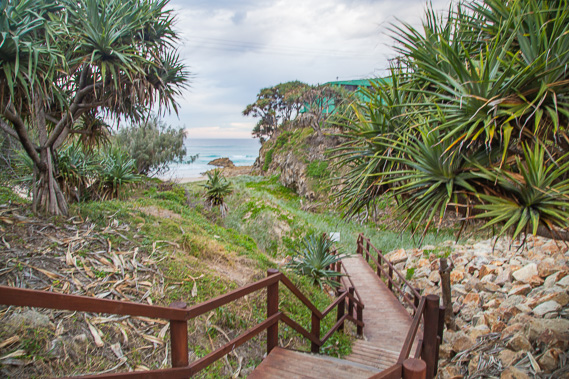 |
16:40 - From almost the town centre, a boardwalk track leads towards South Gorge under the surf club. |
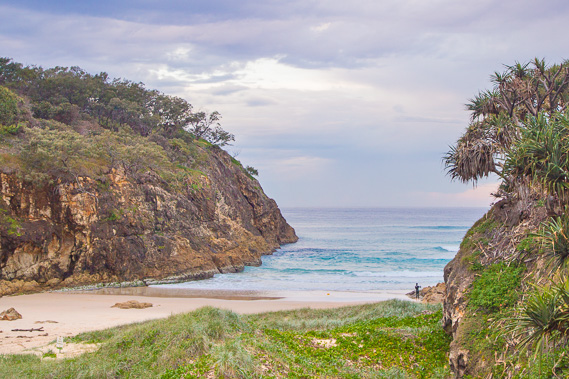 |
16:41 - The little beach of South Gorge between the surf club as Point Lookout. |
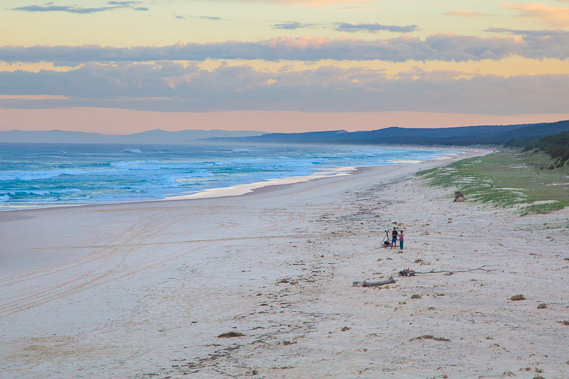 |
16:43 - I'm not the only photographer capturing the sunset. Already the swell is reducing with the wind having died down two hours ago. I can see down the beach with the blue sandhills towering over the island. In the distance are the pale blue mountains of the Tweed Volcano behind Gold Coast city. |
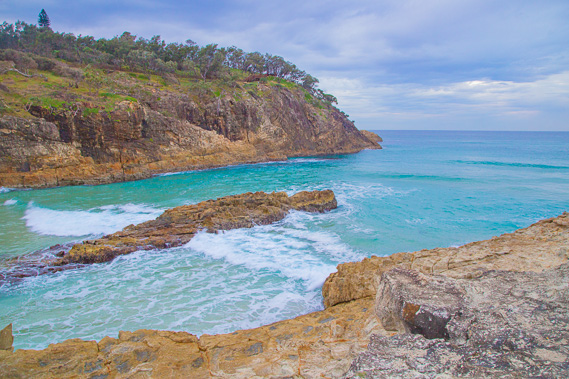 |
16:47 - Big waves breaking into South Gorge between the rocky headlands. |
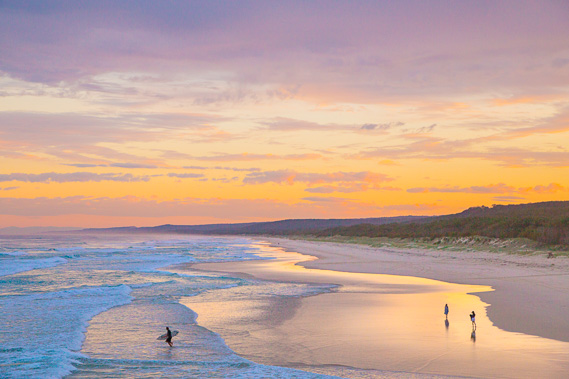 |
16:57 - A surfer braving the big swell as the sun sets. At the end of this week is the earliest sunset at of the year at 4:58PM in Brisbane and 4:57 on the Gold Coast. We haven't reached the shortest day yet, and the morning sunrises have several more weeks of getting later. People finishing work in the cities would be leaving just at sunset and getting home after dark as it does get dark very quickly. |
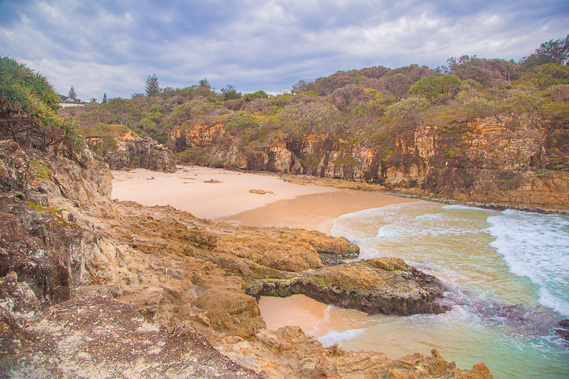 |
16:59 - Looking back up South Gorge towards the main town of Point Lookout almost completely obscurred behind the rocks. |
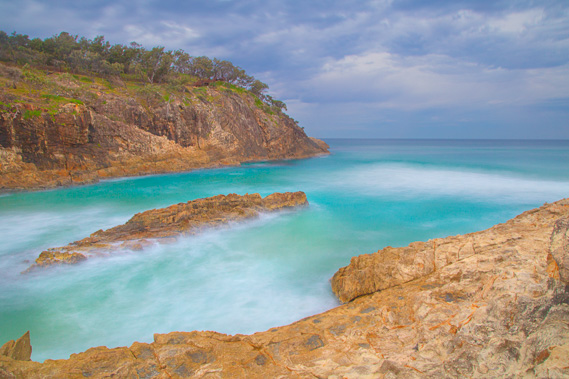 |
17:11 - Long exposure shot of Point Lookout and South Gorge. |
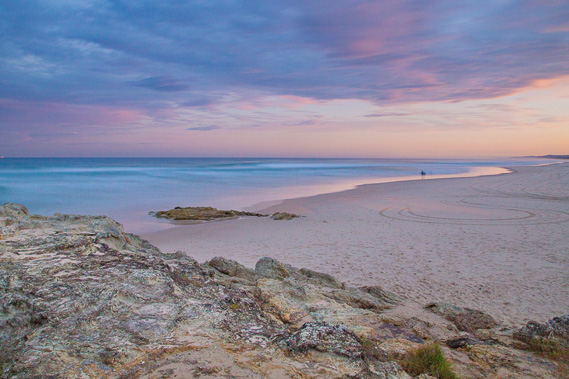 |
17:31 - Heading to the main beach briefly at last light before heading back up to my accommodation in the village. |
|


















































